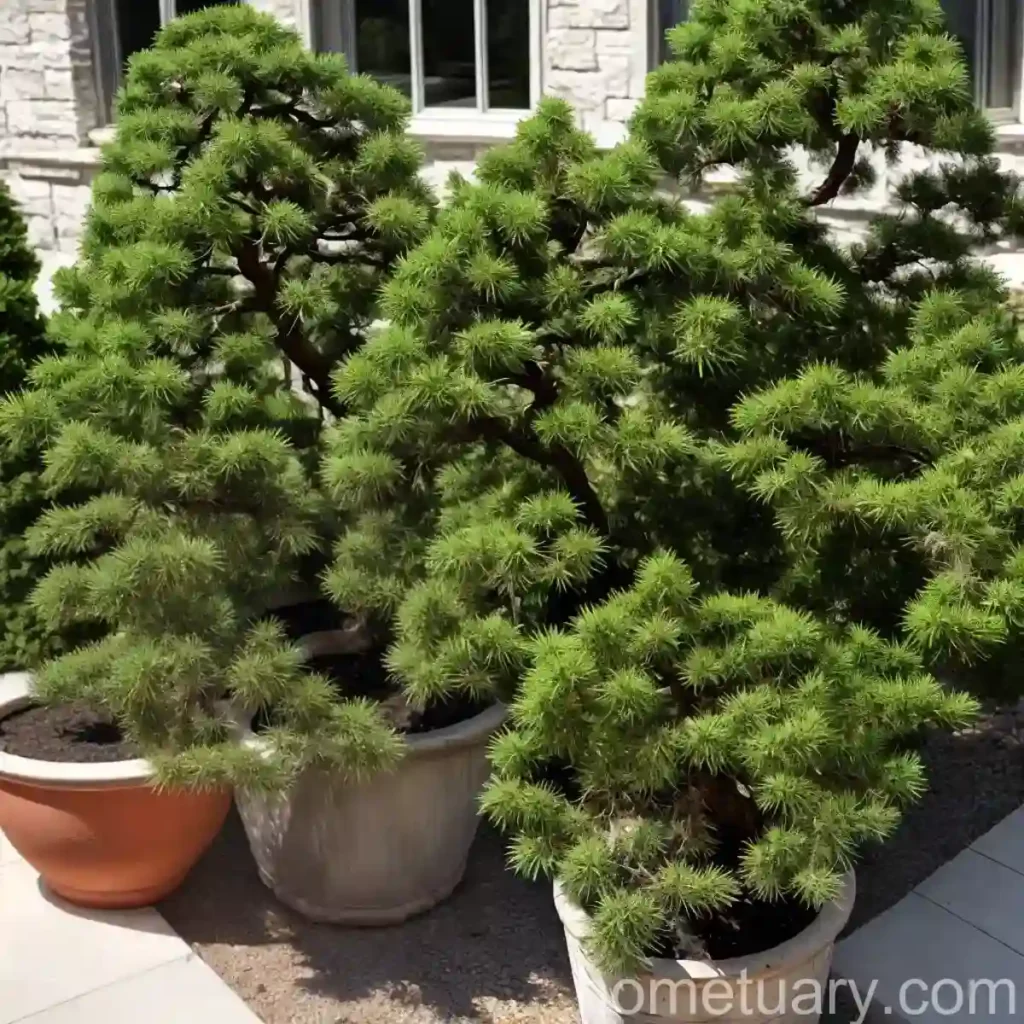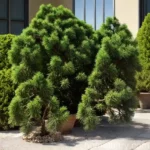Chinese Juniper (Juniperus x pfitzeriana ‘Mint Julep’): A Complete Plant Care Guide
Plants play a crucial role in our environment, providing us with various benefits such as clean air, food, medicine, and aesthetic beauty. Among the plethora of plant species, the Chinese juniper, scientifically known as Juniperus x pfitzeriana ‘Mint Julep’, stands out for its distinct characteristics and versatility in landscaping. In this comprehensive guide, we will delve deep into the various facets of caring for this fascinating plant, covering everything from its cultural requirements to pest management, and from propagation techniques to its landscape uses.
What is the Chinese Juniper (Juniperus x pfitzeriana ‘Mint Julep’)?
The Chinese juniper (Juniperus x pfitzeriana ‘Mint Julep’) is an evergreen shrub that belongs to the cypress family, Cupressaceae. It is a hybrid juniper resulting from the cross between Juniperus chinensis and Juniperus sabina. This hybrid cultivar is particularly valued for its compact and spreading growth habit, making it an excellent choice for adding texture and structure to landscapes.
Key Takeaways – Chinese Juniper (Juniperus x pfitzeriana ‘Mint Julep’)
- Scientific Name: Juniperus x pfitzeriana ‘Mint Julep’
- Family: Cupressaceae
- Common Name: Chinese Juniper
- Plant Type: Evergreen Shrub
- Mature Height: 2-3 feet
- Mature Spread: 4-6 feet
- Growth Rate: Slow to Moderate
- Exposure: Full Sun to Partial Shade
- Watering: Low to Moderate
- Hardiness Zones: 4-9
- Landscape Uses: Hedges, Mass Planting, Borders, Rock Gardens
Now, let’s explore the cultural requirements, uses, and care tips for the Chinese juniper in detail:
Culture
The success of cultivating Chinese juniper (Juniperus x pfitzeriana ‘Mint Julep’) lies in understanding and implementing its cultural requirements. From water and sunlight to the soil and fertilizer needs, providing the right conditions is essential for the optimal growth and health of this unique plant.
Water
Chinese juniper is known for its tolerance to drought conditions, making it an ideal choice for landscapes with limited water availability. However, it’s important to note that while it can withstand dry spells, regular watering during the establishment phase is crucial for its overall health.
- Water Requirements:
- Young Plants: Water deeply once a week for the first few months after planting.
-
Established Plants: Water deeply once every 2-3 weeks during dry periods.
-
Watering Tips:
- Ensure proper drainage to prevent waterlogging, which can lead to root rot.
- Water in the morning to allow foliage to dry during the day, reducing the risk of fungal diseases.
Sunlight
Chinese juniper thrives in full sun to partial shade conditions, exhibiting its best growth and color in well-lit areas. When selecting a planting site, consider the following sunlight requirements:
- Sunlight Needs:
- Full Sun: 6-8 hours of direct sunlight per day.
-
Partial Shade: Filtered sunlight for a few hours daily.
-
Sunlight Tips:
- Ensure the plant receives adequate sunlight for healthy growth and vibrant foliage color.
- In hotter regions, partial shade during the peak afternoon hours can protect the plant from scorching.
Fertilizer
Fertilization helps provide Chinese juniper with the essential nutrients it needs to thrive. However, this plant is relatively low-maintenance and often requires minimal fertilization, especially when grown in well-prepared soil.
- Fertilizer Requirements:
-
Apply a balanced, slow-release fertilizer in spring before new growth begins.
-
Fertilizer Tips:
- Avoid over-fertilization, as excessive nutrients can lead to excessive foliage growth at the expense of overall plant health.
- Use a fertilizer specifically formulated for woody ornamental plants and follow the recommended application rates.
Soil
The soil composition and quality significantly impact the growth, health, and overall performance of the Chinese juniper. Understanding the soil needs and making appropriate amendments can ensure the plant’s long-term success in a landscape setting.
- Soil Type:
- Well-draining, loamy soil is ideal for Chinese juniper, but it can adapt to a wide range of soil types.
-
Adjust soil pH to the range of 6.5-7.5 for optimal nutrient availability.
-
Soil Preparation:
- Prior to planting, amend heavy clay soils with organic matter to improve drainage and aeration.
- For sandy soils, incorporating organic mulch helps enhance moisture retention and fertility.
Pruning
Pruning is an essential aspect of Chinese juniper care, contributing to its aesthetic appeal, controlling its size, and promoting healthy growth. Proper pruning techniques and timing are crucial for maintaining the plant’s desired shape and structure.
- Pruning Frequency:
-
Light annual pruning in early spring to shape the plant and remove any dead or diseased branches.
-
Pruning Tips:
- Use sharp, clean pruning tools to make precise cuts and avoid tearing the bark.
- Avoid heavy pruning, as Chinese juniper is slow to recover from drastic cuts.
Propagation
The ability to propagate Chinese juniper through various methods allows for the expansion of its presence in different landscapes and gardens. Understanding the propagation techniques can empower plant enthusiasts to multiply their prized juniper specimens.
- Propagation Methods:
- Seed Propagation: Collect and sow seeds in a well-draining seed starting mix in early spring.
-
Cutting Propagation: Take semi-hardwood cuttings in summer and root them in a moist rooting medium.
-
Propagation Tips:
- Provide bottom heat when propagating from cuttings to encourage root development.
- Keep the propagation medium consistently moist to support the establishment of new plants.
Container Popularity
The compact and spreading growth habit of Chinese juniper makes it a popular choice for container gardening. Its adaptability to container culture allows for versatile use in various outdoor and indoor settings.
- Container Planting Tips:
- Use a well-draining potting mix designed for woody plants to ensure adequate aeration and moisture retention.
- Select a container with drainage holes to prevent waterlogging and root rot.
Common Diseases
While Chinese juniper is relatively resistant to most diseases, certain environmental conditions and cultural practices may predispose it to specific issues. Recognizing the symptoms and understanding disease prevention strategies are key aspects of effective plant care.
Disease Diagnosis
Common diseases that may affect Chinese juniper include root rot, tip blight, and cedar-apple rust. Understanding the signs and symptoms of these diseases is essential for timely intervention and management.
- Root Rot:
- Symptoms: Wilting, yellowing, or browning of foliage, accompanied by a foul odor from the root zone.
-
Prevention: Ensure well-draining soil and avoid overwatering to mitigate the risk of root rot.
-
Tip Blight:
- Symptoms: Browning and dieback of branch tips, often accompanied by black fungal spore structures.
-
Prevention: Prune affected branches promptly and sanitize pruning tools to prevent the spread of the pathogen.
-
Cedar-Apple Rust:
- Symptoms: Orange-brown galls on branches, often accompanied by yellow spots on foliage.
- Prevention: Remove nearby junipers if affected by the disease, as they serve as alternate hosts for the pathogen.
Common Pests
While Chinese juniper is generally resistant to most pest infestations, occasional issues with spider mites and bagworms may arise. Implementing proactive pest management strategies can help maintain the plant’s vigor and appearance.
- Spider Mites:
- Symptoms: Fine webbing on foliage, stippled or discolored leaves, and reduced plant vigor.
-
Control: Use horticultural oils or insecticidal soaps to manage spider mite populations effectively.
-
Bagworms:
- Symptoms: Presence of spindle-shaped bags on branches, defoliation, and visual damage to the plant.
- Control: Handpick and destroy bags during winter or early spring to prevent infestations.
Botanist’s Tips
As a plant scientist and enthusiast, it’s essential to have a deeper understanding of Chinese juniper to appreciate its unique features and ecological contributions.
- Observation: Regularly monitor the plant’s growth and development to identify any signs of stress or disease early on.
- Environment: Consider the native habitat of Chinese juniper to inform landscape design and create naturalistic planting schemes.
- Biodiversity: Encourage the use of Chinese juniper as a wildlife-friendly plant, providing shelter and forage for local fauna.
Fun Facts
- Chinese juniper has been traditionally used in bonsai cultivation, showcasing its adaptability to intricate and artistic pruning techniques.
- The aromatic foliage of Chinese juniper emits a pleasant scent when crushed or brushed, adding sensory appeal to outdoor spaces.
- The dense and textured foliage of the ‘Mint Julep’ variety makes it an excellent choice for creating visual interest in rock gardens and Mediterranean-inspired landscapes.
Now that we have explored the fundamentals of Chinese juniper care, let’s delve into the specific characteristics and requirements highlighted by the provided NLP LSI keywords.
Chinese Juniper Care: NLP LSI Keyword Breakdown
Chinese Juniper Care
Applying the comprehensive care guidelines detailed above ensures the optimal health and vitality of Chinese juniper in various landscape settings.
Juniperus x pfitzeriana ‘Mint Julep’ Characteristics
The ‘Mint Julep’ cultivar stands out for its compact growth habit, aromatic foliage, and versatile landscape applications, contributing to the unique appeal of this juniper species.
Best Soil for Chinese Juniper
Well-draining, loamy soil with a slightly acidic to neutral pH range (6.5-7.5) provides an ideal growing medium for Chinese juniper, allowing for optimal root development and nutrient uptake.
How to Propagate Chinese Juniper
Propagation methods such as seed sowing and cutting propagation offer effective ways to propagate Chinese juniper, enabling plant enthusiasts to expand the presence of this versatile species.
Chinese Juniper Pruning Tips
Light annual pruning in early spring not only helps maintain the plant’s desired form but also encourages healthy growth and foliage density, contributing to its aesthetic appeal.
Juniperus x pfitzeriana ‘Mint Julep’ Growth Habit
The spreading and compact growth habit of the ‘Mint Julep’ variety makes it an excellent choice for ground cover, mass planting, and low border applications in landscaping.
Chinese Juniper Water Requirements
While Chinese juniper exhibits tolerance to drought, regular watering during the establishment phase and dry periods is essential to support its overall health and vigor.
Juniperus x pfitzeriana ‘Mint Julep’ Varieties
The ‘Mint Julep’ variety is characterized by its dense, mint-green foliage, adding a refreshing and vibrant appeal to landscape compositions.
Chinese Juniper Diseases and Pests
Managing potential diseases such as root rot and pests such as spider mites is essential for ensuring the long-term health and vitality of Chinese juniper in landscapes.
Beginner’s Guide to Chinese Juniper
For newcomers to plant care, the Chinese juniper offers a relatively low-maintenance option, providing an opportunity to learn about cultivation and landscaping practices.
Juniperus x pfitzeriana ‘Mint Julep’ Landscaping Uses
The aesthetic versatility and adaptability of the ‘Mint Julep’ variety make it an ideal choice for various landscaping applications, including hedges, borders, and rock gardens.
Chinese Juniper Companion Plants
Selecting suitable companion plants that complement the form and foliage of Chinese juniper enhances the visual appeal and biodiversity of garden and landscape designs.
Juniperus x pfitzeriana ‘Mint Julep’ Sunlight Needs
Providing the appropriate sunlight conditions, ranging from full sun to partial shade, supports the optimal growth and foliage color development of the ‘Mint Julep’ variety.
Chinese Juniper Winter Care
Winter care practices, including proper mulching and protection from harsh winds, help safeguard Chinese juniper against cold stress and desiccation during the dormant season.
Juniperus x pfitzeriana ‘Mint Julep’ Pruning Techniques
Adopting precise and selective pruning techniques ensures that the intricate form and dense foliage of the ‘Mint Julep’ variety are maintained throughout the growing season.
Chinese Juniper Container Gardening
The adaptability of Chinese juniper to container culture enables its use in diverse outdoor and indoor settings, offering flexibility in landscape design and maintenance.
How to Spot Chinese Juniper Problems
Regular observation and proactive monitoring of Chinese juniper can help identify potential issues early on, allowing for timely intervention and management.
Juniperus x pfitzeriana ‘Mint Julep’ Foliage Color
The characteristic mint-green foliage color of the ‘Mint Julep’ variety adds a refreshing and vibrant visual element to garden and landscape compositions.
Chinese Juniper Soil pH Requirements
Maintaining a slightly acidic to neutral soil pH range (6.5-7.5) supports optimal nutrient availability and uptake for the healthy growth of Chinese juniper.
Juniperus x pfitzeriana ‘Mint Julep’ Growth Rate
The slow to moderate growth rate of the ‘Mint Julep’ variety provides an opportunity for long-term landscape planning, allowing for controlled expansion and visual maturation.
Chinese Juniper Benefits for the Environment
Chinese juniper contributes to the environment by providing habitat, shelter, and food for local wildlife, enhancing biodiversity and ecological balance in natural and cultivated landscapes.
Juniperus x pfitzeriana ‘Mint Julep’ Landscape Design Ideas
The unique form, texture, and color of the ‘Mint Julep’ variety inspire creative landscape design concepts, adding visual interest and structural appeal to outdoor spaces.
Chinese Juniper Water Retention Abilities
The ability of Chinese juniper to retain moisture in the foliage and root system contributes to its resilience in drought-prone landscapes and garden settings.
Juniperus x pfitzeriana ‘Mint Julep’ Leaf Texture
The fine and textured foliage of the ‘Mint Julep’ variety adds depth and visual interest to garden compositions, enhancing the tactile and visual appeal of Chinese juniper.
Chinese Juniper Native Habitat
Understanding the native habitat of Chinese juniper provides valuable insights into its ecological adaptability and informs landscape design and plant community compositions.
Juniperus x pfitzeriana ‘Mint Julep’ Drought Tolerance
The inherent drought tolerance of the ‘Mint Julep’ variety makes Chinese juniper a resilient and low-maintenance choice for water-wise landscapes and gardens.
Chinese Juniper Planting Guide
Following a comprehensive planting guide ensures the successful establishment and long-term health of Chinese juniper in diverse landscape and garden settings.
Juniperus x pfitzeriana ‘Mint Julep’ Disease Resistance
The ‘Mint Julep’ variety exhibits resilience to common diseases, emphasizing its suitability for low-intervention and sustainable landscape applications.
Chinese Juniper Winter Hardiness
Chinese juniper’s winter hardiness, particularly in USDA hardiness zones 4-9, supports its adaptability to diverse climates and provides year-round ornamental value.
Juniperus x pfitzeriana ‘Mint Julep’ Root System
Understanding the root system of Chinese juniper and its spatial requirements informs planting and maintenance practices, ensuring its long-term health and stability.
Chinese Juniper Pruning Schedule
Adhering to a regular pruning schedule, particularly in early spring, enables the systematic maintenance and aesthetics of Chinese juniper in landscape settings.
Juniperus x pfitzeriana ‘Mint Julep’ Leaf Shape
The foliage of the ‘Mint Julep’ variety features a distinctive and characteristic leaf shape, adding visual interest and texture to garden and landscape compositions.
Chinese Juniper Fall Color
While primarily known for its evergreen foliage, Chinese juniper may exhibit subtle color changes in the fall, contributing to seasonal interest in landscape designs.
Juniperus x pfitzeriana ‘Mint Julep’ Insect Repellent Properties
The aromatic foliage of the ‘Mint Julep’ variety may possess natural insect-repellent properties, offering additional functional and ecological benefits in landscapes.
Chinese Juniper Growth Habits
Understanding the growth habits and patterns of Chinese juniper informs its positioning and planting arrangements, contributing to well-balanced and visually appealing landscapes.
Juniperus x pfitzeriana ‘Mint Julep’ Wildlife Attraction
The ‘Mint Julep’ variety may attract local wildlife, providing habitat and forage for beneficial fauna, contributing to the ecological value of Chinese juniper in landscapes.
Chinese Juniper Fertilizer Requirements
Limited fertilizer requirements and a preference for low-nutrient environments make Chinese juniper a low-maintenance and sustainable choice for garden and landscape applications.
Juniperus x pfitzeriana ‘Mint Julep’ Wind Resistance
Chinese juniper’s wind resistance makes it particularly suitable for landscapes exposed to coastal or open environments, displaying resilience to harsh environmental conditions.
Chinese Juniper Soil Drainage Needs
Well-draining soil with good aeration supports Chinese juniper’s root health, mitigating the risk of waterlogged conditions and associated root diseases.
Juniperus x pfitzeriana ‘Mint Julep’ Medicinal Uses
While primarily valued for ornamental and ecological attributes, juniper species have historically been used for various medicinal and aromatic purposes.
Chinese Juniper Mature Size
Understanding the mature size and spread of Chinese juniper informs spacing and design considerations, ensuring proper plant placement and growth accommodation.
Juniperus x pfitzeriana ‘Mint Julep’ Hardiness Zones
The adaptable nature of Chinese juniper in USDA hardiness zones 4-9 demonstrates its resilience to diverse climatic conditions, allowing for widespread landscape use.
Chinese Juniper Pruning Methods
Adhering to selective and precise pruning methods ensures that the form and density of Chinese juniper are maintained, contributing to its long-term aesthetic appeal.
Juniperus x pfitzeriana ‘Mint Julep’ Natural Habitat
Exploring the natural habitat and ecological associations of Chinese juniper provides insights into its adaptive traits and informs landscape design and plant community selection.
Chinese Juniper Drought Resistance
The inherent drought resistance of Chinese juniper makes it a sustainable and environmentally friendly choice for water-wise landscapes and xeriscaping projects.
Juniperus x pfitzeriana ‘Mint Julep’ Flowering Period
While known primarily for its foliage and structure, Chinese juniper may exhibit subtle flowering, providing additional seasonal interest in gardens and landscapes.
Chinese Juniper Disease Prevention
Implementing proactive disease prevention measures, such as proper cultural practices and monitoring, supports the long-term health and vigor of Chinese juniper.
Juniperus x pfitzeriana ‘Mint Julep’ Soil Preferences
Understanding the soil preferences of Chinese juniper helps inform planting site selection and soil preparation, ensuring the plant’s long-term health and performance.
Chinese Juniper Sun Exposure Needs
The appropriate sun exposure















